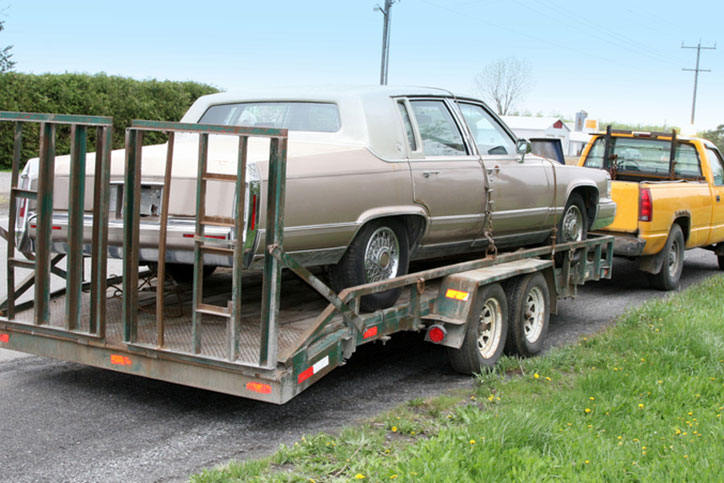First time renting or driving with a trailer attached? Not sure what to expect? With a few basic safety precautions, you can drastically improve your experience and your confidence on the road. Check out these safety tips for using a rental trailer.
Make Sure Your Vehicle Can Pull the Trailer
If your vehicle has a hitch or a place to put a hitch, it can probably pull some sort of trailer. However, not all vehicles are meant to pull all trailers. Each vehicle has its own Gross Vehicle Weight Rating (GVWR), which represents how much weight it can pull in total between the weight of the car and the weight of the trailer. It’s important to verify that your combined trailer and vehicle weight will not exceed your GVWR.
If you’re still not 100% sure if your vehicle is compatible with your rental trailer, ask! Most trailer rental companies will have a general idea of the types of vehicles that can pull their trailers. Let them know what you drive and what you’re aiming to rent, and they can give you a rough idea of if the plan will work. Feel free to call Easy Car Haulers if you’re looking for a trailer rental in Southeast Michigan: (888) 672-1206.
Thoroughly Review Trailer Driving Tips before You Start
Driving with a vehicle attached is a little different than driving a truck on its own. Imagine walking around with a long cape that has weights at the very end. How you move, sit and walk around will be slightly different than how you do without the cape on.
The trailer is a cape for your vehicle. You’ll need to adjust your driving strategies accordingly. The big takeaways are to drive at a steady pace and to avoid sharp turns, but you can review our Trailer Driving Guide for more information.
Load the Trailer Correctly – Heavy Items in Front, Balanced from Side to Side
Whether you’re driving an enclosed trailer or an open car hauler, you should load about 60% of the weight into the front of the trailer (near the hitch). This will prevent the back end from sliding everywhere as you drive. Distribute weight evenly from left to right, and strap down sections of the load all throughout the trailer. Review our Trailer Loading Tips to learn more.
Get Familiar with Where Your Safety Equipment Is
If you have a flat or unexpected issue while you’re driving, you need to be prepared for that. Make note of where your safety equipment is before you leave the parking lot. Flat repair kit, tools, safety goggles, flashlights, etc. – have an idea where these objects are and don’t block their accessibility. You may also want to bring extra straps and ropes with you in your vehicle in case you need to tie down a load as you drive.
Monitor the Trailer in Your Mirrors
As you drive, keep an eye on the road in front of you and the trailer behind you. If you notice objects coming loose on the trailer, pull over and make adjustments. If the trailer is moving around too much on the road, you may need to change the load distribution or drive slower altogether.
Practice defensive driving, and don’t be afraid to pull over as needed. It’s better to be overly cautious and arrive safely than overlook an issue that could cause damage to you or other drivers.

